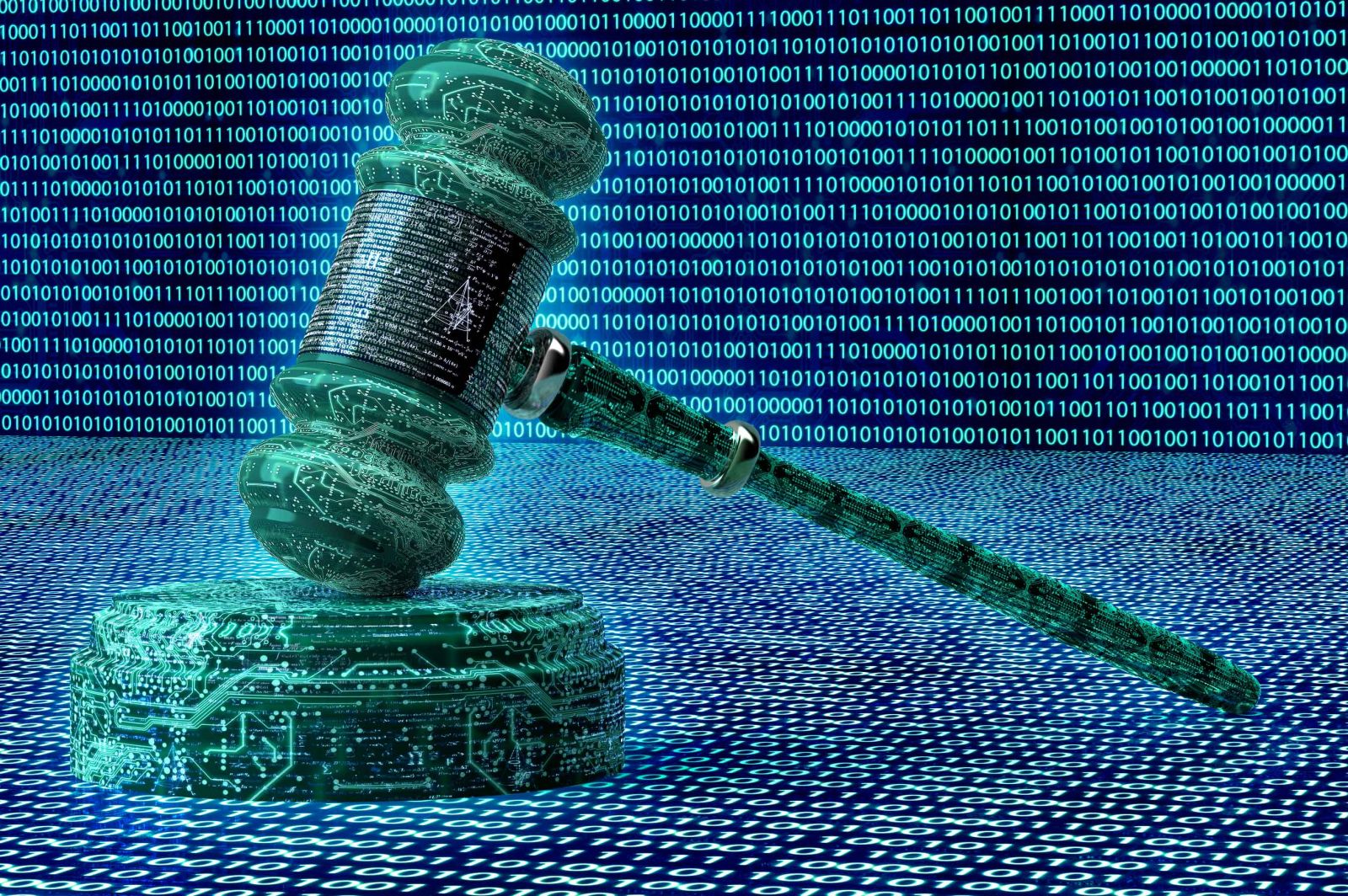Digital “War Rooms” in Hearings, Trials and Beyond: How Technology Innovations in Singapore, the UK and the US Are Transforming the Legal Landscape

When it comes to the application of innovative technology to legal proceedings and the pursuit of paperless litigation, Singapore already has plenty of reasons to be proud. In many ways, the country can serve as a model for other jurisdictions that are striving to create the conditions for substantially more efficient and cost-effective litigation – not just in Courts and hearing rooms, but also in firms and legal departments where litigation teams collaborate in preparation for depositions, negotiations, hearings and trials.
A key element to Singapore’s leadership in the drive toward fully electronic litigation – and the efficiencies and cost-savings it can make possible – is a committed partnership between government entities and the private sector, as well as buy-in from the legal community at large. This commitment is exemplified by Chief Justice Sundaresh Menon’s very recent address at the Admission of Advocates and Solicitors Mass Call 2016, wherein he extols the advantages of computer technology “designed to automate labour-intensive work” in freeing up lawyers to pursue “more high-value work.”1
Singapore’s history in modernising litigation goes at least as far back as 1997, when the country’s Electronic Filing System (“EFS”) was launched as a pilot. EFS became mandatory in 2000,2 but it has since been replaced with a more robust nationwide system for Courtroom modernisation called eLitigation, which launched in 2013. The stated objective of eLitigation is “to provide both law firms and court users with an integrated platform for the filing and service of court documents and active management of case files throughout the litigation process.”3 Among other features, eLitigation provides for secure electronic access to Court documents through a web-based interface, allows filings to be completed online or saved for submission at a later date, replaces PDFs with dynamic electronic Court forms, provides authorised parties with full access to all documents related to a case as long as the case remains active, provides for management of case files through e-mail and SMS reminders, and offers a calendaring and hearing management module for scheduling hearing dates.4 Fully electronic, paperless litigation isn’t quite a reality yet, but Singapore is undoubtedly a global leader when it comes to integrating trial and case management technology into the litigation process.
How did Singapore get there? Long before eLitigation there was a collective vision shared by every major sector of the legal community, including lawyers, legal departments of private companies, Judges and government agencies and leaders – a vision inspired by the emergence of promising technologies. A crucial step in articulating this view was an ambitious document produced in 2005 by the Singapore Academy of Law (the “Academy”), which outlined a “roadmap” for implementing litigation technology. The Academy envisioned electronic “war rooms” where “[a]ll documents and relevant material” related to a case would be stored and made accessible 24/7 to parties and stakeholders in a dispute, and these “war rooms” would be designed to “facilitate communication and correspondence between the litigant and his lawyer.” Litigation would be conducted electronically at every stage, and substantive legal analysis and collaboration with colleagues and clients could be conducted in real time, even during the course of actual proceedings.5 Considering it was presented more than 10 years ago, this was a prescient vision of the future of litigation, and it now appears we are on the verge of realising that vision on a broad scale.
The efficiencies enabled by the Academy’s “war room” concept are already proving to be substantial, as demonstrated in a 2014 intellectual property dispute heard before Singapore’s Supreme Court, Global Yellow Pages v Promedia Directories, where the use of cloud-based case management software saved litigants an estimated $40,000 in printing costs alone.6 More than 250,000 pages were created electronically in less than 10 days at the trial preparation stage, including full pagination and volume, tab and document numbers. In a conventional paper trial the cost of printing all sets of the trial bundle could have exceeded $100,000. It should be noted that all Supreme Court hearing rooms are equipped with the necessary infrastructure to conduct electronic hearings, and counsel is encouraged to bring laptops to access electronic case files and present their cases.7 The Singapore International Commercial Court, a division of the Singapore High Court and a part of the Supreme Court that handles transnational commercial disputes, is also equipped with cutting-edge technology, including evidence and trial management systems like Opus 2 Magnum (also used in Global Yellow Pages) and Realtime platforms.8
Two major international arbitrations at Singapore’s Maxwell Chambers, Asia’s premier venue for alternative dispute resolution (“ADR”) and the world’s first integrated dispute resolution complex, recently deployed the same technology used in Global Yellow Pages to provide comprehensive digital document services, electronic presentation of evidence (with live hyperlinking), and real-time Court reporting, eliminating the need for multiple copies of printed documents and streamlining the entire arbitration process. Much like the “war room” scenario presented in the Academy’s “roadmap,” the technology establishes a virtual workspace where groups of authorised users can access key discovery documents, transcripts, exhibits, research, lawyer work product and just about any other litigation-related materials, and those materials can be discussed, annotated, hyperlinked and shared electronically within a secure web-based interface set up specifically for a particular group of users.9 (Contrary to persistent popular perceptions, it should be emphasised that data hosted in the cloud is more secure, especially when you take into account the risks of loss or theft involved in physically transporting paper copies, laptops, discs or thumb drives containing sensitive information.)
In their own ways, the UK and the US have also begun to embrace the concept of the electronic “war room” or workspace. In the UK it began in 2011 with a massive international case, a multi-billion-dollar commercial dispute between a pair of Russian billionaires, Roman Abramovich and Boris Berezovsky. This trial was remarkable for its sheer size and complexity: The trial bundle contained more than 5,000 e-discovery documents in multiple languages, and the cost of printing the seven complete sets of documentation required for the five parties involved and the Judge and witnesses would have run to €26,000 per set under ordinary circumstances. But this was no ordinary trial, because the presiding Judge encouraged the introduction of cloud-based electronic trial bundle technology, which not only achieved huge savings on printing costs, but also sped up proceedings significantly. For example, instead of fumbling through binders and papers to present the building blocks of their legal arguments, lawyers in the case were able to use the virtual workspace to create 19,000 live hyperlinks, establishing instant connections between pieces of evidence found in witness statements, transcripts, chronologies and disclosed documents.
Hoping to build on the success of the technology used in Berezovsky, the UK is now engaged in an ambitious attempt to bring today’s technology into its courtrooms and its criminal justice system,10 including a €75 million-per-year project to modernise the UK’s HM Courts & Tribunal Service (“HMCTS”). Elizabeth Gloster, who presided over Berezovsky, has since become a vocal advocate of modernisation and digitalisation for the UK’s Royal Courts of Justice.11 HMCTS now has a new electronic filing and case management system called CE-File, which is currently in an extended pilot phase which includes Technology and Construction Court, Chancery Division, Commercial and Admiralty Courts and Bankruptcy and Companies Courts.
The effort to digitise litigation focuses on London’s commercial Courts, which comprise a global epicenter of international business disputes. Among the components of the plan: replacement of a hodge podge of outdated computer systems with a single integrated electronic case management system; an online self-service system for payment and other functions; and digital presentation of evidence in the courtroom. This program is projected to deliver savings of more than £100 million per year by 2019/20, but it also aims to create a number of efficiencies, including the provision of access by defence lawyers to eBundles before trial, which in many cases would result in a guilty plea and eliminate the expense of putting the defendant before a Judge.12 A related initiative presented by then-Justice Minister Damian Green in 2013, which in many ways runs parallel to efforts to modernise the HMCTS, aims at reforming the entire Criminal Justice System (“CJS”) in the UK and includes a provision to develop a single system for case information to be shared across the CJS. This would eliminate replication of case data on multiple systems and provide all relevant parties access to the same data at the same time. The reform effort also includes plans for Wi Fi and digital evidence screens in the majority of Courtrooms nationwide.13
Efforts to modernise litigation and Courtrooms look somewhat different in the US – where e-discovery technology and information governance have taken center stage in the legal technology domain – the primary focus of innovation in the courtrooms remains on e-filing and updating facilities to accommodate the electronic presentation of evidence. States like Utah, Texas and Florida have emerged as leaders in the move toward electronic litigation, and the emphasis on e-filing alone appears to be achieving significant savings for some jurisdictions.14 There is widespread recognition in the US of the need to utilise technology to make post-discovery litigation more efficient, and a few commentators have shared their own individual strategies for reducing the use of paper and creating streamlined workflows in preparation for trial, although these efforts tend to rely on multiple point solutions like Adobe Acrobat and OneNote rather than an integrated system designed specifically for lawyers.15
But there’s an interesting twist to the modernisation puzzle in the US: the same technology that was used in Berezovsky in the UK and Global Yellow Pages in Singapore to streamline trial proceedings is currently being used in the US – but not in Courtrooms. Instead it is being used by law firms at the deposition or trial preparation stages to enhance case analysis and to facilitate collaboration between members of geographically dispersed legal teams as they work to understand the essential facts and develop an effective case strategy. The “war room” concept, it turns out, is eminently adaptable to the teamwork lawyers and paralegals engage in every day as they prepare for depositions, manage transcripts and analyse and prepare cases ahead of negotiations, hearings and trials. In each of these use cases, a dynamic virtual workspace provides access to documents, testimony, facts and work product, and legal teams deploy litigation-specific tools to organise exhibits, share insights, sketch out arguments based on connections among related pieces of evidence, and identify key documents that will play a pivotal role in proceedings. In some instances, virtual workspaces are also being created to facilitate real-time collaboration between opposing parties and their counsel, without the need to schedule in-person meetings or teleconferences, or make expensive travel arrangements.

So what can we learn from these parallel developments in Singapore, the UK and the US? The technology for paperless depositions, hearings and trials – as well as for transcript management and the various phases of trial preparation – already exists and is robust. Key technical elements include secure, scalable cloud computing requiring minimal upfront investment; 24/7 web-based access from any Internet-connected device like PCs, Macs, tablet and smartphones; purpose-built software designed specifically for the intensively collaborative work legal teams perform daily; and a comprehensive, integrated toolset for managing key documents, transcripts, audio and video, research and lawyer work product in a single workspace – including tools for markup and annotation, coding and tagging, hyperlinking between passages and documents, robust targeted searching, notification and instant sharing, and real-time discussion. These components together comprise a complete, fully functional shared infrastructure for hearing rooms or Courtrooms, as well as a single interface for legal teams engaged in case analysis and pretrial preparations, and they will undoubtedly pave the way to a truly paperless, cost-effective and efficient litigation process in multiple jurisdictions across the globe.
The examples in Singapore and the UK highlight how a strong consensus and partnership between public institutions and leaders on the one hand, and private-sector legal professionals and technology vendors on the other, can create momentum and facilitate rapid, broad-based change. But the US has a somewhat different story to tell. It is true that electronic filing is only now becoming commonplace in the US – albeit through a state-by-state patchwork of disparate initiatives – but technology-enabled, paperless, collaborative workflows are now emerging as a game-changer in the pre-trial phases of litigation. This development illustrates how the right technology can take hold and create substantial efficiencies and ultimately more effective legal work, even without massive public sector funding or support. Perhaps the most important factor in achieving true innovation is developing a coherent vision of what available technology can achieve. The “war room” metaphor accomplishes this brilliantly by encapsulating the deeply collaborative work and strategic thinking lawyers engage in and the key benefits of cloud computing, and the metaphor applies equally well to every post-discovery phase of the litigation process, from early case assessment to case analysis to deposition prep to transcript management and on to trial.
Back in Singapore, the next major focus of innovation using the technology we’ve discussed here is likely to rest on arbitration hearings. As we have noted earlier, electronic hearings (“eHearings”) are already taking place in high-volume, high-value, document-intensive disputes involving practice areas like intellectual property, commercial disputes, and the building and construction industries, and they are creating substantial time and cost savings, both at the preparation stage – particularly during the exchange of Affidavits of Evidence-in-Chief (“AEIC”) and at the bundling stage – and during the hearings themselves. eHearings are in many ways the perfect test case for cloud-based case and trial management technology, particularly in Singapore, which already has state-of-the-art facilities and is a major arbitration hub for complex international disputes, with parties and witnesses dispersed across the globe. Also, the ability to scale to the demands of massive commercial cases without increased capital investment is a crucial advantage of cloud computing, which should make the case for additional “war rooms” even more attractive. The roadmap is not yet complete, but the future is bright indeed.

► Charlie Harrel
Senior Legal Consultant
Opus 2 International
Notes
1 Menon seems to suggest that technology may help address the current problem of junior lawyers leaving the profession because of “burnout” from performing repetitive, manual tasks that can now be automated. “Address by the Chief Justice,” 26 August 2016: http://www.supremecourt.gov.sg/Data/Editor/Documents/CJ%20Mass%20Call%20Speech%202016%20on%2026%20August%202016%20(Final).pdf.
2 See “The Electronic Filing System in Singapore – Tackling the ‘Human’ Elements” ND: http://unpan1.un.org/intradoc/groups/public/documents/UNPAN/UNPAN 031797.pdf.
3 FAQ page of the eLitigation website: https://www.elitigation.sg/_layouts/IELS/Home/PortalFAQ.aspx.
4 eLitigation page on Singapore’s Supreme Court website: http://www.supremecourt.gov.sg/services/services-for-the-legal-profession/elitigation.
5 “Electronic Litigation in Singapore: A Roadmap for the Implementation of Technology in the Litigation Process”, Singapore Academy of Law, January 2005: http://www.sal.org.sg/Documents/Electronic%20Litigation%20Roadmap%20-%20Jan%202005.pdf.
6 “Lawyers Go Green to Save Paper, Time and Cost”, The Straits Times, 30 October 2014: http://news.asiaone.com/news/singapore/lawyers-go-green-save-paper-time-and-cost.
7 Technology page of the Singapore Supreme Court website: http://www.supremecourt.gov.sg/services/visitor-services/court-facilities/technology#3.
8 “The Singapore International Commercial Court in Action: Illustrations from the First Case” Singapore Academy of Law, 21 July 2016: http://www.sicc.gov.sg/documents/docs/21-7-16_The_SICC_in_Action_e-First.pdf.
9 For a brief history and overview of the technology, see Simon Tolson, “The Paperless Trial”, Building.co.uk, 20 May 2013: http://www.building.co.uk/the-paperless-trial/5054654.article.
10 “Transforming the CJS: A Strategy and Action Plan to Reform the Criminal Justice System”, Ministry of Justice, June 2013: https://www.gov.uk/government/uploads/system/uploads/attachment_data/file/209659/transforming-cjs-2013.pdf.
11 “London Courts Go Digital, Ending Dickensian Document Legal Maze”, Bloomberg, 4 September 2014: http://www.bloomberg.com/news/articles/2014-09-04/london-courts-go-digital-ending-dickensian-document-legal-maze.
12 “Chris Grayling: reform of the courts and tribunals”, UK Ministry of Justice press release, 28 March 2014.
13 “Justice – all at the touch of a button”, Birmingham Mail, 29 June 2013.
14 See Marilyn Tennissen, “Texas Courts Enter Digital Age with E-File Mandate”, SETexasRecord.com, 7 January 2014: http://setexasrecord.com/stories/510623077-texas-courts-enter-digital-age-with-e-file-mandate; and Rachel A. Canfield, “A Brave New Appellate E-World”, The Florida Bar Journal, January 2016: https://www.floridabar.org/DIVCOM/JN/JNJournal01.nsf/8c9f13012b96736985256aa900624829/c2322a2971b36c7385257f290059b5fb!OpenDocument.
15 See, for example, “The Paperless Trial”, The Docket: A Denver Bar Association Publication, June 2012: http://denbar.org/docket/photos/fullPDF/docket201206.pdf; “Is It Possible to Go Completely Paperless in a Law Office?”, 29 July 2014: http://abovethelaw.com/2014/07/is-it-possible-to-go-completely-paperless-in-a-law-office/; and “The Benefits of Going Paperless, Part 2”, 19 August 2014: http://abovethelaw.com/2014/08/the-benefits-of-going-paperless-part-2/.


